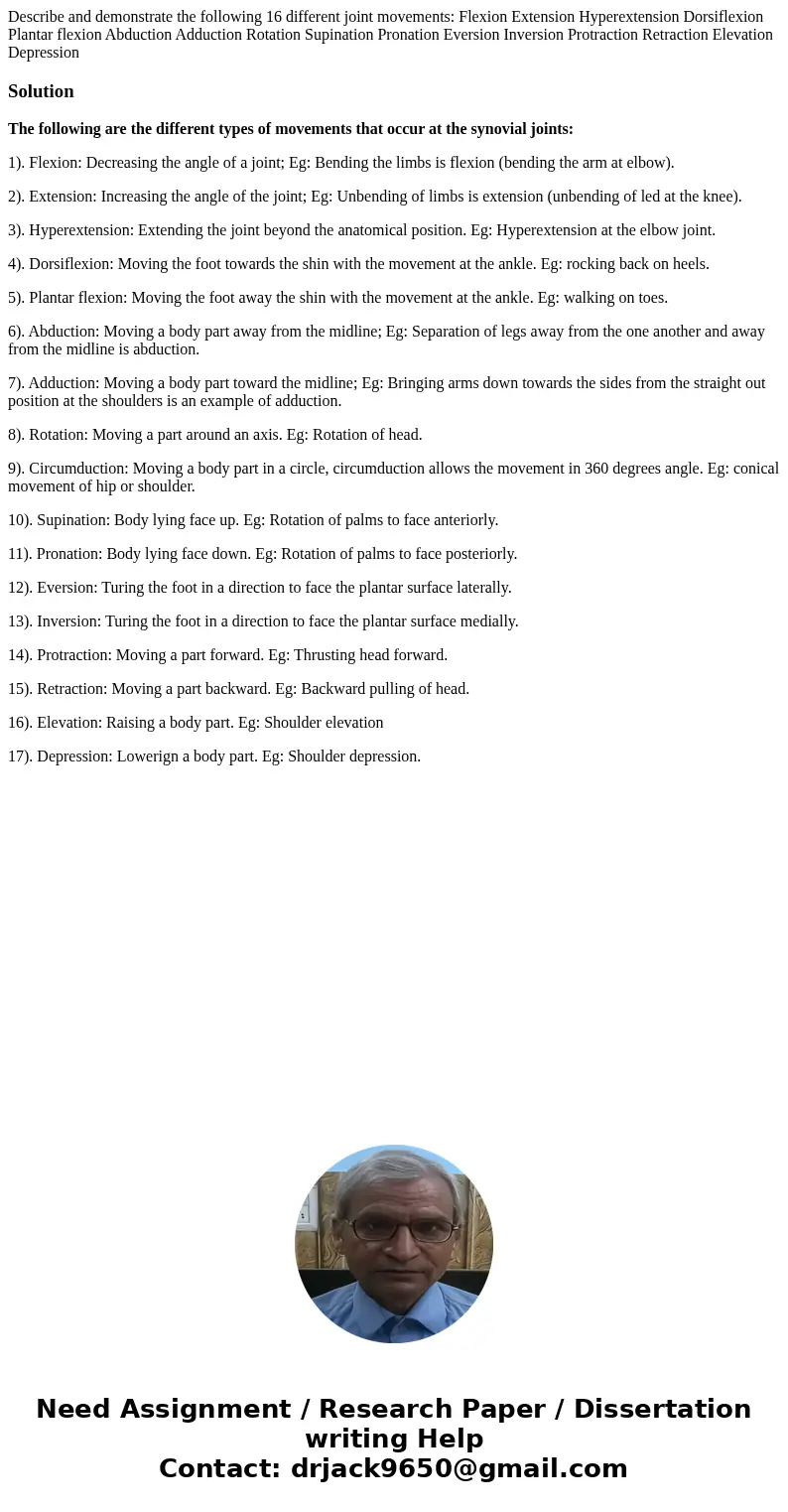Describe and demonstrate the following 16 different joint mo
Solution
The following are the different types of movements that occur at the synovial joints:
1). Flexion: Decreasing the angle of a joint; Eg: Bending the limbs is flexion (bending the arm at elbow).
2). Extension: Increasing the angle of the joint; Eg: Unbending of limbs is extension (unbending of led at the knee).
3). Hyperextension: Extending the joint beyond the anatomical position. Eg: Hyperextension at the elbow joint.
4). Dorsiflexion: Moving the foot towards the shin with the movement at the ankle. Eg: rocking back on heels.
5). Plantar flexion: Moving the foot away the shin with the movement at the ankle. Eg: walking on toes.
6). Abduction: Moving a body part away from the midline; Eg: Separation of legs away from the one another and away from the midline is abduction.
7). Adduction: Moving a body part toward the midline; Eg: Bringing arms down towards the sides from the straight out position at the shoulders is an example of adduction.
8). Rotation: Moving a part around an axis. Eg: Rotation of head.
9). Circumduction: Moving a body part in a circle, circumduction allows the movement in 360 degrees angle. Eg: conical movement of hip or shoulder.
10). Supination: Body lying face up. Eg: Rotation of palms to face anteriorly.
11). Pronation: Body lying face down. Eg: Rotation of palms to face posteriorly.
12). Eversion: Turing the foot in a direction to face the plantar surface laterally.
13). Inversion: Turing the foot in a direction to face the plantar surface medially.
14). Protraction: Moving a part forward. Eg: Thrusting head forward.
15). Retraction: Moving a part backward. Eg: Backward pulling of head.
16). Elevation: Raising a body part. Eg: Shoulder elevation
17). Depression: Lowerign a body part. Eg: Shoulder depression.

 Homework Sourse
Homework Sourse